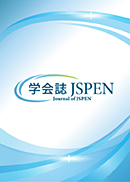Volume 4, Issue 2
Displaying 1-9 of 9 articles from this issue
- |<
- <
- 1
- >
- >|
-
2022Volume 4Issue 2 Pages 51
Published: 2022
Released on J-STAGE: November 06, 2022
Download PDF (490K)
-
2022Volume 4Issue 2 Pages 52-62
Published: 2022
Released on J-STAGE: November 06, 2022
Download PDF (2352K) Full view HTML -
2022Volume 4Issue 2 Pages 63-71
Published: 2022
Released on J-STAGE: November 06, 2022
Download PDF (921K) Full view HTML -
2022Volume 4Issue 2 Pages 72-78
Published: 2022
Released on J-STAGE: November 06, 2022
Download PDF (1140K) Full view HTML -
2022Volume 4Issue 2 Pages 79-89
Published: 2022
Released on J-STAGE: November 06, 2022
Download PDF (940K) Full view HTML -
2022Volume 4Issue 2 Pages 90-95
Published: 2022
Released on J-STAGE: November 06, 2022
Download PDF (3107K) Full view HTML
-
2022Volume 4Issue 2 Pages 96-101
Published: 2022
Released on J-STAGE: November 06, 2022
Download PDF (1246K) Full view HTML -
2022Volume 4Issue 2 Pages 102-107
Published: 2022
Released on J-STAGE: November 06, 2022
Download PDF (1154K) Full view HTML
-
2022Volume 4Issue 2 Pages 108
Published: 2022
Released on J-STAGE: November 06, 2022
Download PDF (537K)
- |<
- <
- 1
- >
- >|
